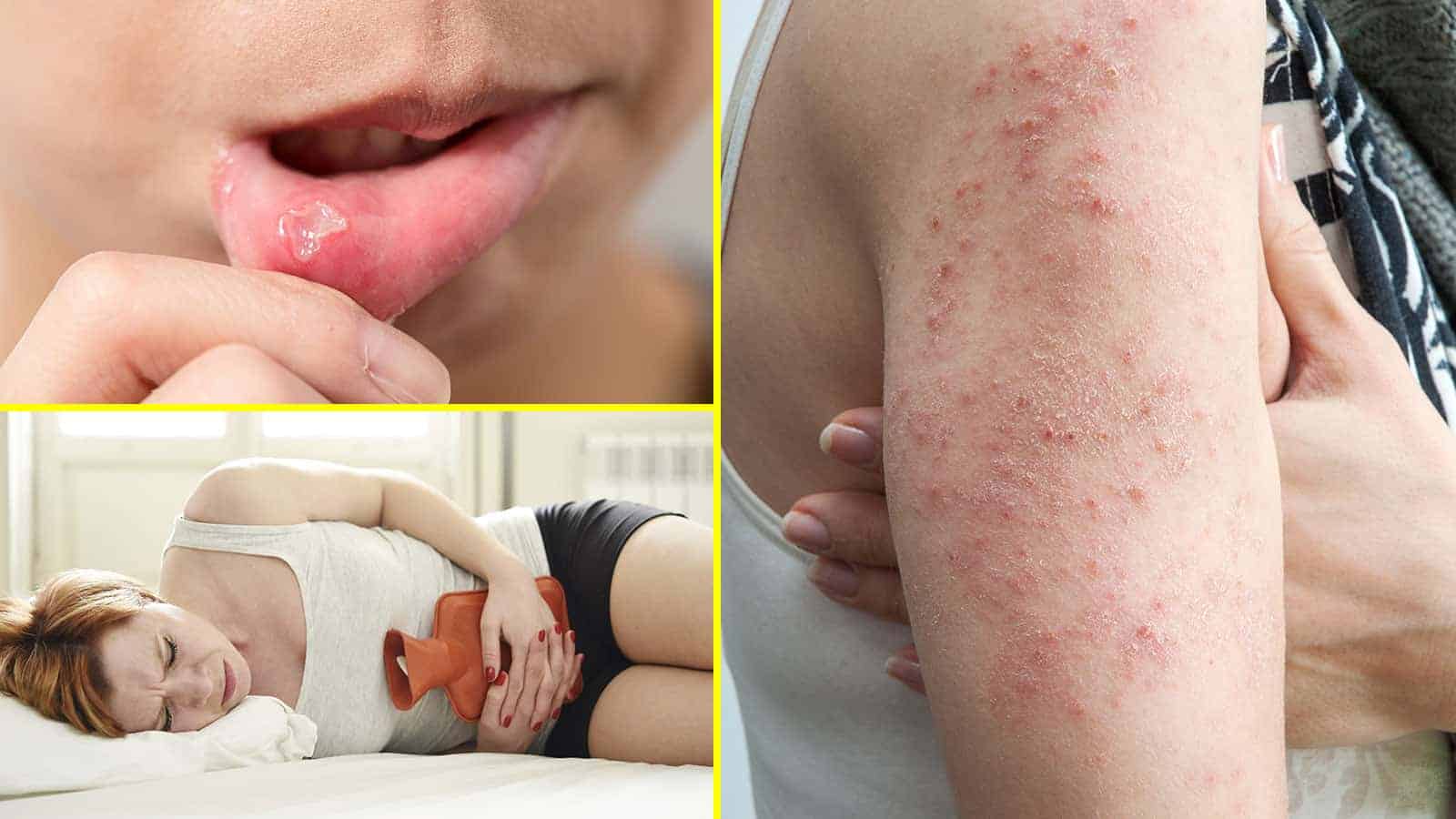Any dermatologist will tell you that stressed skin has an undeniable way of showing itself. You may notice things such as dry skin, itchy skin, dull skin, or even rough skin. Even worse, you can start to develop skin conditions and diseases that make your skin look even worse.
Skin is the largest group of cells that make up the human body, so it’s no surprise that stress can have such a substantial effect on it. There are plenty of great skincare routines on the market. But stressed skin that manifests in the form of skin conditions or diseases might require the intervention of your dermatologist.
5 Most Likely Causes of Stressed Skin
1. Bumps, Boils, or Acne
Bumps or boils can occur for many reasons on the body. Usually, it’s an indicator that there is some contaminant that your body is trying to push out. Stress triggers an increase in chemicals and hormone production in the body. These bumps and boils can be a way for your body to try to dispose of this surplus of substances.
A lot of smaller bumps, especially on the face, is called acne. Acne is one of the most common skin conditions in the world. These bumps can range from small bumps that you may or may not feel to large, red, painful bumps. Since acne almost always occurs on the face, it’s hard to hide it.
Acne is a condition that most pre-teens and teens face when going through puberty, whether they have stressed skin or not. It commonly lasts through the young adult stage and tapers off as people get older. However, it’s not unheard of for it to continue well into adulthood.Acne happens when hair follicles become clogged with oil and dead skin cells. Stress can make this happen much more often than it usually would. Stress causes overactive sebaceous glands (oil glands), which leads to a higher chance of clogs. The result is more acne for younger people or persistent acne for older people.
For most people, acne is just a nuisance but doesn’t cause permanent damage. However, some people aren’t so lucky. Bumps from acne can be painful and bleed. If acne is severe enough, it can even lead to permanent scarring. With stress increasing its occurrence, there is a higher risk of permanent damage from acne.
The great thing about acne is that treatments are usually straightforward. Typical cases of acne can be treated with OTC skincare routines such as facial cleansers or skincare products with Benzoyl Peroxide or Salicylic Acid. You can even manage more severe cases of acne that are caused by bacteria with ongoing and diligent care.
2. Red Splotches or Hives
Hives are an evident skin rash that occurs from some type of irritant. It appears as pale red bumps or puffy red splotches on the skin. These “splotches” can link together to form larger areas called plaques. These plaques can grow as big as the size of a plate.
Anyone can get hives since it’s caused by some type of allergic reaction to an irritant. A typical case of hives doesn’t last long and can go away in a day or so as long as the person isn’t still exposed to the irritant. However, acute or chronic hives can last weeks and can typically be due to underlying conditions such as Hepatitis C or cancer.
Hives happen when your body releases a chemical called histamine. Histamine causes small red blood vessels to leak under your skin, which leads to the red splotches. Stress can cause hives in one of two ways. Stress can amp up the production of histamine or cause small blood vessels to leak even without the presence of histamine.
Typical cases of hives can appear anywhere on the body and cause swelling and itching. Occasionally they can burn or sting. It’s rare, but extreme cases of hives could require immediate medical attention because the swelling could close the airways.
Usually, hives can be treated by removing the trigger. Depending on the reason for your stress, this could be difficult to do right away.
3. More Bumps – Rosacea
Rosacea is almost like a combination of acne and hives. It’s characterized by red blotches on the skin with small, pus-filled pimples or bumps. Rosacea usually occurs on the face. You may be able to see tiny blood vessels under the splotches.
Rosacea affects men as well as women, and people with fair skin are at higher risk of developing the condition. Rosacea doesn’t usually develop in children, but it’s not unheard of for this to happen. When it does occur in children, there can be severe complications.
The essential cause of rosacea is an adverse reaction to bad chemical reactions in the body. Stress causes several chemical reactions in the body, so it’s no surprise that it can cause rosacea to flare up. Even worse is that you can never tell which chemical reactions stress will produce, so you’d have to assume that any type of stress could be a trigger.
Rosacea mostly causes superficial skin problems. Redness, tingling, itching, and bumps are the most common problems. The worst problem is if rosacea starts affecting the eyes. In fact, the risk of eye problems is higher in children. These problems can include pink eye, styes, swollen eyelids with open sores, sensitivity to light, or even blindness.
There is no cure for rosacea, but getting rid of as much stress as possible can significantly reduce breakouts. Learning the triggers of the condition and avoiding them is the best way to prevent the disease.
4. Dry, Rough Skin or Eczema
When your skin is dry and rough, there is usually an underlying cause. Eczema can be one of those causes. Eczema is a condition where patches of skin become dry, raw, and cracked. There are different types of eczema, with the most common being atopic dermatitis. Familiar places that eczema shows up are the cheeks, nose, chin, neck, inner elbow, or the inner knees.
Anyone can develop eczema at any age. It’s more common for babies and children to develop it and have it go away as they get older. However, some people keep the condition into adulthood, and some don’t develop it until adulthood.
Studies explain that stress can trigger chemical reactions in your body. It can trigger an excess of cortisol. In large amounts, cortisol causes inflammation throughout the body. This inflammation can happen in the skin, triggering an episode of eczema.
The good news about eczema is that it only affects the skin. It doesn’t cause any life-threatening problems. However, rashes that occur from eczema can be very unsightly and uncomfortable. They can itch, crack, and bleed. They can sometimes be painful. There is a possibility of lichenification, a phenomenon where the rash thickens then develops knots and a permanent itch. Another consideration is since the rashes can occur on exposed areas of the body, they can be embarrassing.
You can resolve your eczema with a host of natural remedies, including:
- Colloidal oatmeal
- Honey
- Drinking plenty of water
- Eating probiotics
5. Scaly Skin or Psoriasis
Psoriasis is a skin rash that commonly occurs on the scalp, knees, trunk, and elbows. It’s characterized by large, red, scaly plaque patches with a silvery crust on them. It’s an autoimmune disease that occurs in a cycle, lasting for weeks to months at a time.
Psoriasis can affect people of any age. It’s not very common in babies and children, although it does show up occasionally at that age. It’s hard to detect in babies because it can be confused with other skin conditions that babies suffer from. Typically, the disease begins showing up in teenaged years.
The reason stress can encourage a psoriasis flare-up is due to why psoriasis happens in the first place. Psoriasis occurs from an overactive immune system. This causes new skin cells to grow faster than your body can shed old skin cells. That’s what causes the plaque buildup. The chemical reactions that stress causes can put your immune system in overdrive, aggravating your psoriasis.
There is a long list of issues that psoriasis can causes. Some of these issues are:
- Skin lesions
- Onycholysis (nails separating from beds)
- Nail crumbling
- Joint pain
It can be tough dealing with psoriasis. The disease tends to have more dramatic effects than the other skin diseases on the list. Furthermore, you treat psoriasis from the inside, first.
Some actions you can take to calm psoriasis include the following:
- Eating a well-balanced, organic, plant-based diet.
- Knowing your food allergies and avoiding them
- Consuming probiotics
Final Thoughts on Calming Your Stressed Skin
Dermatologists all over will tell you that skin is a significant indicator of your health, so you should always pay attention when your skin is showing signs of stress. You can fight against stressed skin with proper skincare routines, but the best way is by reducing the stress in your life. It’s always easier said than done when it comes to eliminating stress. But your stressed skin will thank you for your efforts.

















 Community
Community

